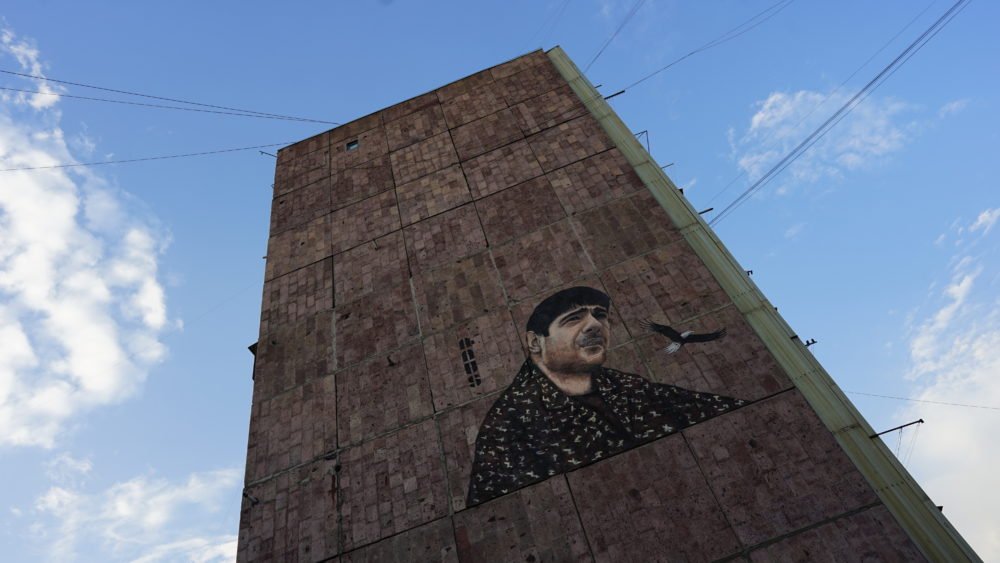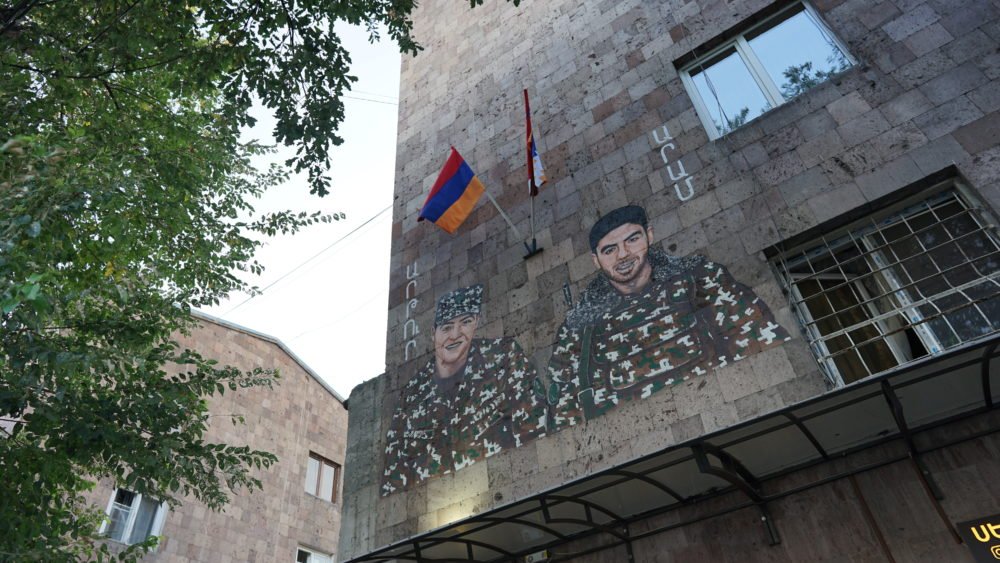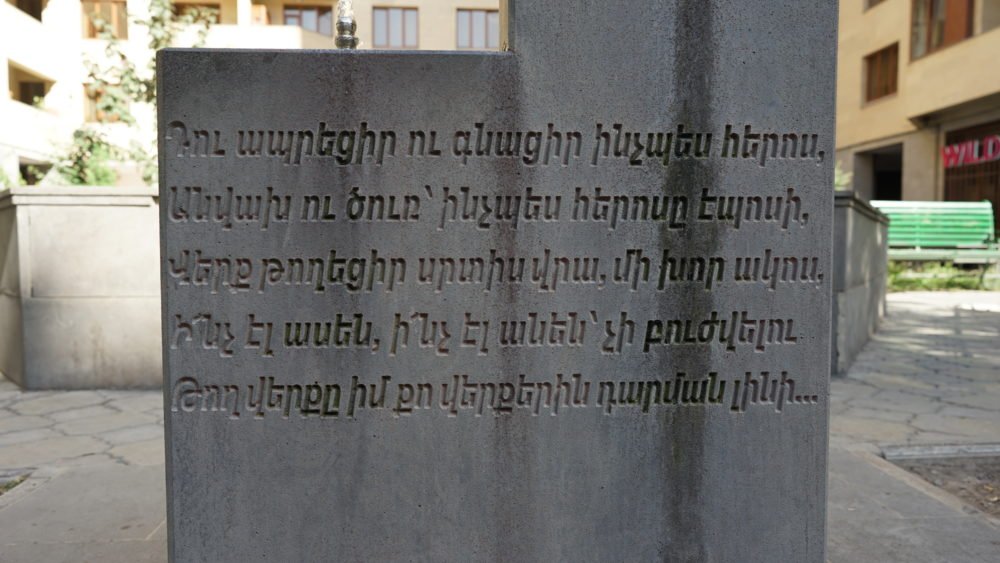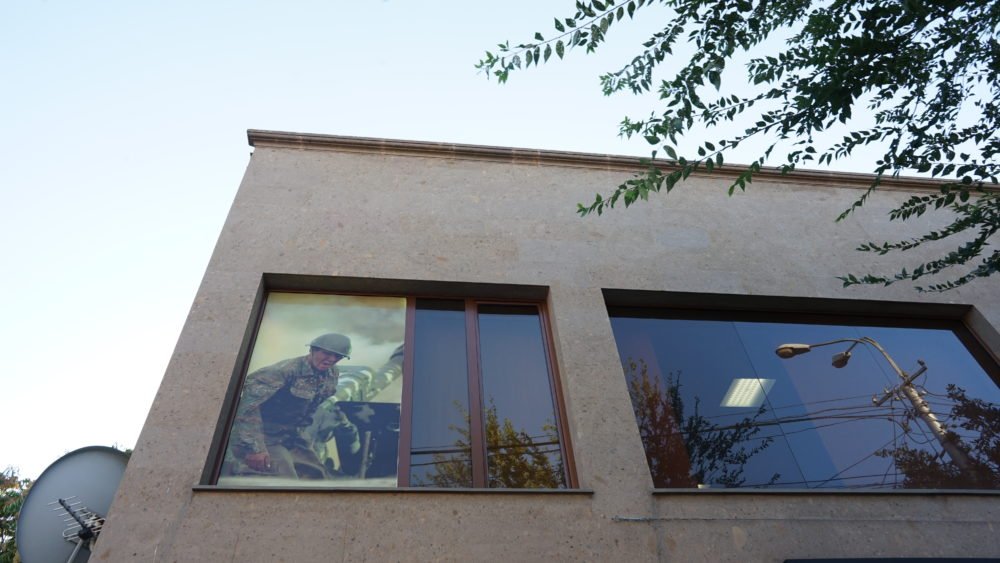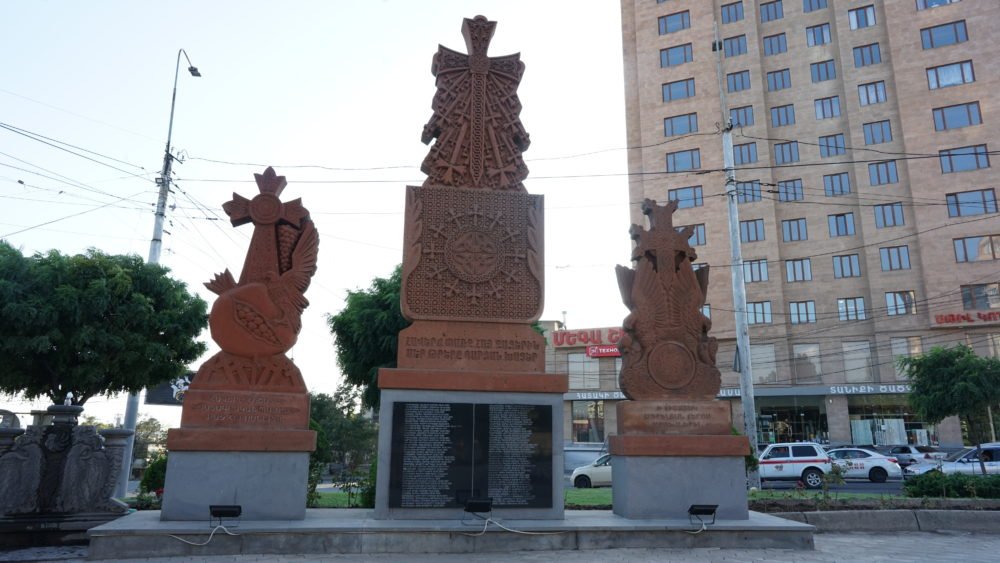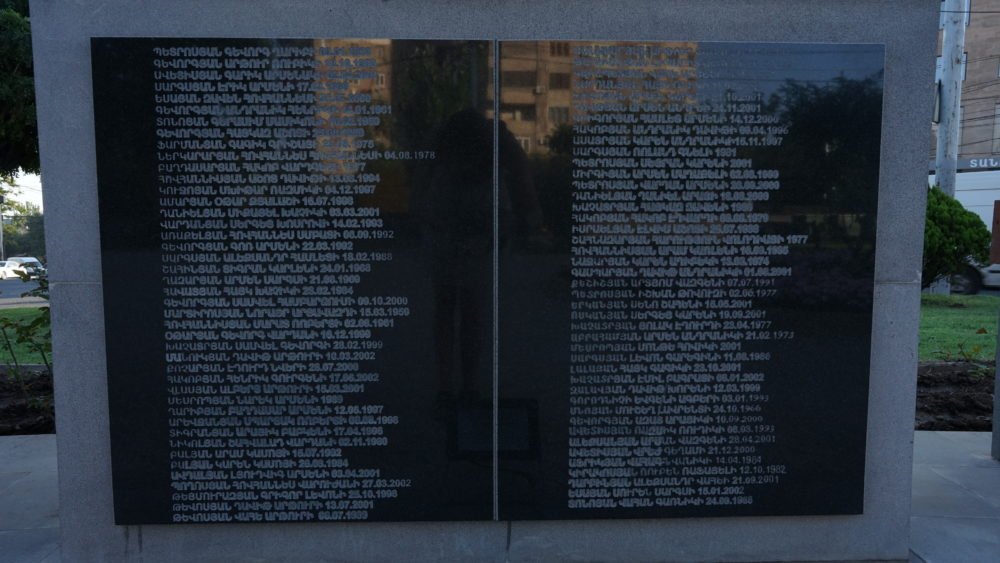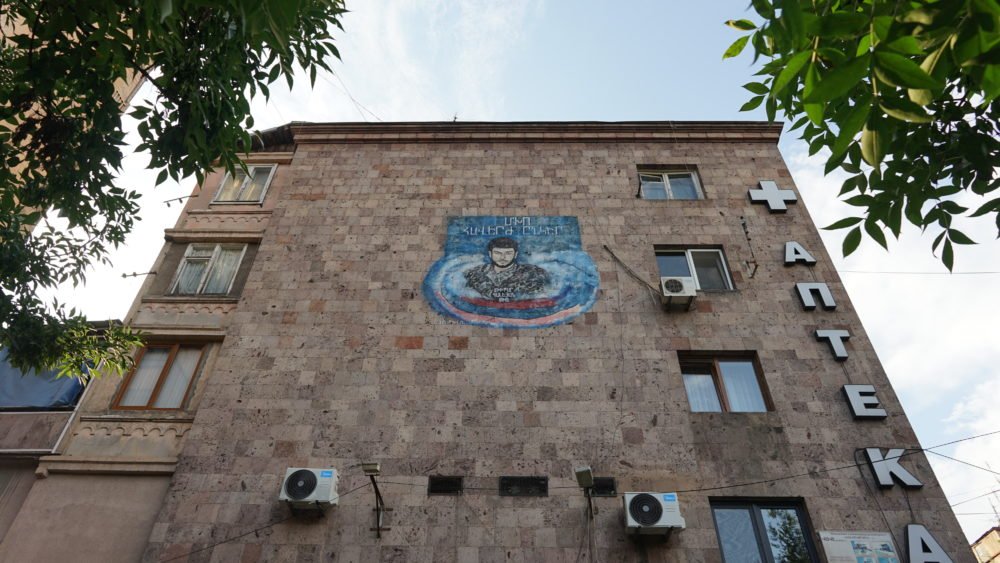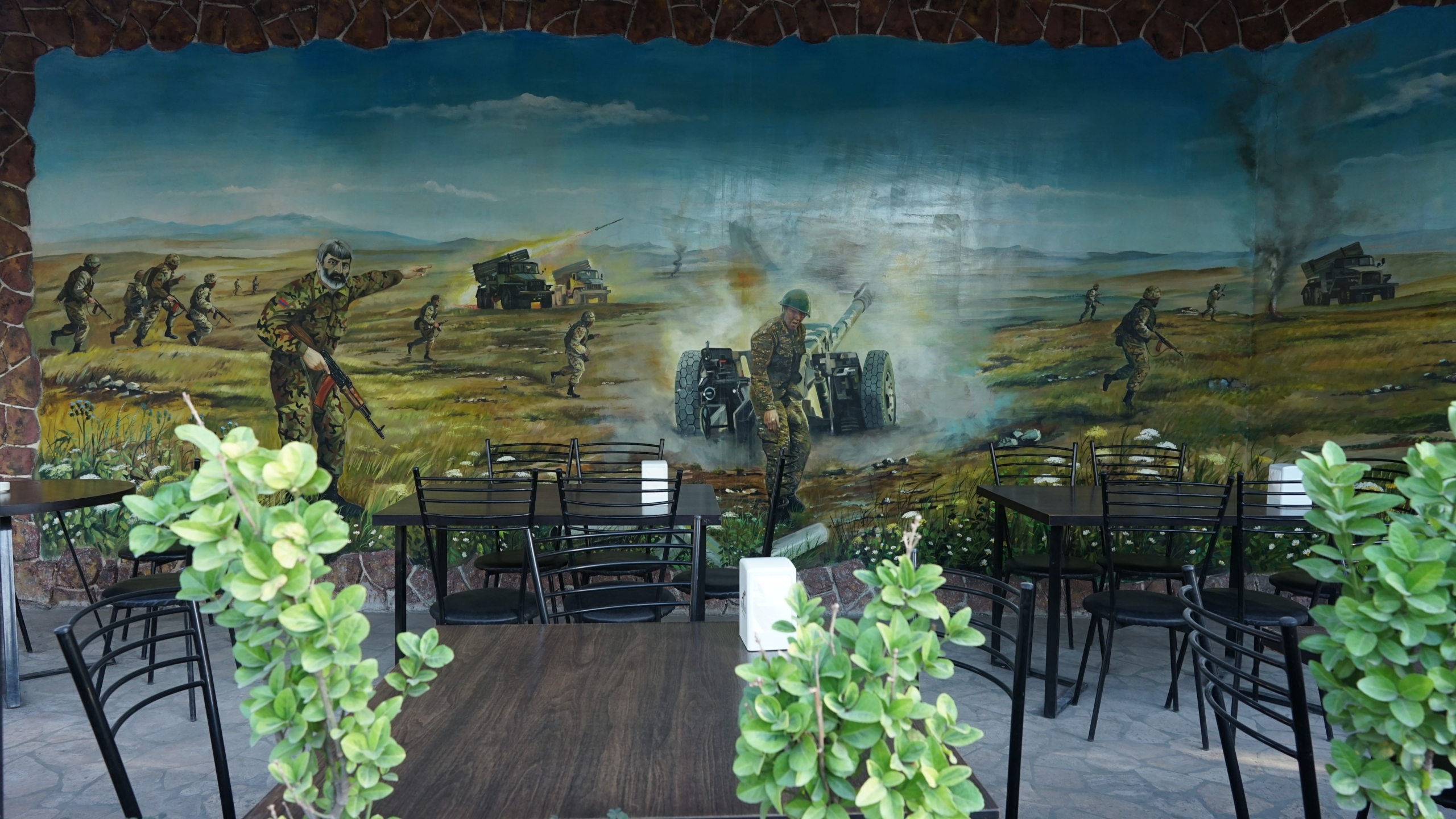
After the 2020 war in Nagorno-Karabakh, every street in Yerevan bears a reminder of the conflict between Armenia and Azerbaijan. These reminders take the form of colorful murals featuring images and portraits of soldiers. However, they are not limited to public spaces alone; they can also be found on the windows of private vehicles, blocks of buildings, and shop walls. It’s worth noting that these images do not depict graphic representations of war and death but rather focus on portraits of individual males who lost their lives during the conflict.
This tradition of commemoration emerged after the first Nagorno-Karabakh conflict in 1988-1994, the main difference in commemoration between the eras is the scale and colors of the murals. In the 90s, small marble portraits covered the walls of the streets, while today, large colored images stretch from nine-story buildings to the glass walls of shops and cars.
Another way fallen soldiers are commemorated is through “Martyr’s Spring”. These memorials consist of decorated concrete walls displaying pictures of the martyrs, whose names are engraved on mounted black marble. These memorials are strategically placed in neighborhood locations where many passers-by can see them, and a water tap is installed on-site to supply drinking water, thus the name “Martyr’s Spring.”
This photo project serves to illustrate the way memorialization has preserved the collective memory of the conflict over the past 30 years in Armenia and Azerbaijan. However, beneath the captivating visuals lies a complex web of politics and nationalism that must be understood to ensure a more nuanced and reflective approach to commemorating the fallen and preventing the glorification of war.
